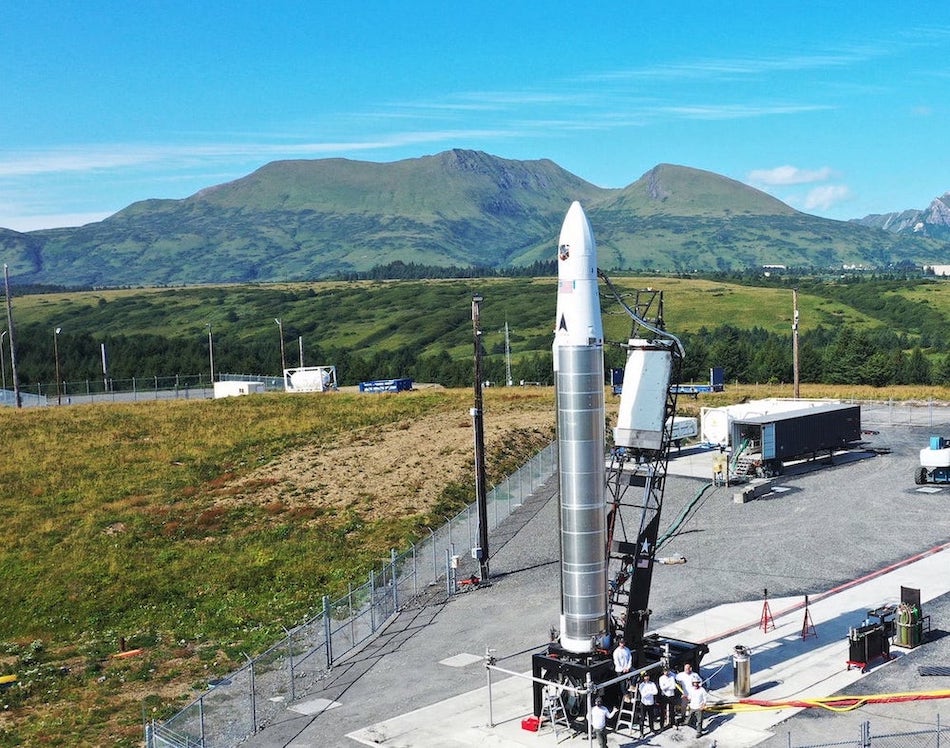EDITOR’S NOTE: Updated after launch abort.

The commercial space company Astra aborted its third orbital launch attempt from Alaska just before liftoff Friday. The company did not immediately confirm when it will try again to launch its compact two-stage launcher sized to haul small satellites into space, but another countdown could come as soon as Saturday.
The mission’s launch window opens at 5 p.m. EDT (12 p.m. Alaska time; 2100 GMT) each day. Astra has clearance to launch the mission through Sept. 11.
Astra is one of numerous private companies aiming to capture a segment of the fast-growing small satellite launch market, alongside operators like Rocket Lab, Virgin Orbit, Firefly Aerospace, and others.
But Astra’s initial class of rockets is smaller than the launchers fielded by competitors in the small launch segment. The next iteration of Astra’s launch vehicle line, called Rocket 3.3, stands 43 feet (13 meters) tall, modest by orbital launch vehicle standards.
But it’s around 5 feet taller than the rockets Astra used for its first two orbital launch attempts last year. With stretched first stage tanks to hold more propellant, and a lighter upper stage, the new rocket configuration can carry heavier cargo into orbit, according to Astra.
Astra tried three times last year to launch its rocket into orbit, with each attempt getting closer to the goal.
The company’s first orbit-capable rocket, named Rocket 3.0, was supposed to launch in February 2020 in an effort sponsored by the U.S. military’s Defense Advanced Research Projects Agency to demonstrate responsive launch capability. But the mission did not get off the ground before DARPA’s deadline after a series of delays.
Astra intended to try again to launch Rocket 3.0, but the vehicle was destroyed in an accident during a wet dress rehearsal, or fueling test, at Kodiak.
Astra’s first orbital launch attempt Sept. 11, using Rocket 3.1, ended 30 seconds after takeoff when a guidance system problem caused the rocket to drift off course. In response, the rocket’s engines were commanded to shut down and the vehicle fell back to the spaceport on Kodiak Island.
On Dec. 15, Astra’s Rocket 3.2 nearly achieved enough speed to enter orbit. But the upper stage engine shut down just seconds before it was supposed to cut off, leaving the rocket just shy of orbital velocity. The vehicle re-entered the atmosphere, and most of it burned up.
Astra dispatched Rocket 3.3, known by its serial number LV0006, and fewer than a dozen employees to Kodiak earlier this month to set up the company’s mobile launch infrastructure. A control team working from Astra’s headquarters in Alameda, California, will oversee the final launch countdown.
The mission will not carry a separating payload, but instead is loaded with sensors and instruments to measure environments on-board during the climb into space. The data will help inform potential customers about the acceleration, loads, pressures, and other conditions inside the rocket’s payload compartment.
The U.S. Space Force contracted the mission with Astra through the Defense Innovation Unit.
“We are thrilled to partner with Astra on this mission and believe this showcases critical low-cost, mobile and responsive launch capability,” said Col. Carlos Quinones, director Department of Defense’s Space Test Program.
Astra says it is under contract for a second launch for the Space Force later this year.
“We’re excited to kick off a multi-launch campaign with the Space Force” said Chris Kemp, founder, chairman and CEO of Astra. “This orbital demonstration launch allows our team to verify numerous upgrades to our launch system.”
Email the author.
Follow Stephen Clark on Twitter: @StephenClark1.
